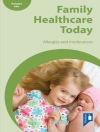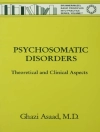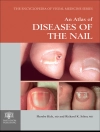This book offers a comprehensive survey of the current state of knowledge in the field of neuro-psychopharmacology in childhood and adolescence. In the first part, the essentials of neuro-psychopharmacology are presented in order to provide a deeper understanding of the principles and particularities in the pharmacotherapy of children and adolescents. This part includes information on neurotransmitters and signal transduction pathways, molecular brain structures as targets for psychiatric drugs, characteristics of psychopharmacological therapy in children and adolescents, ontogenetic influences on pharmacokinetics and pharmacodynamics, and pharmacotherapy in the outpatient setting. The part on classes of psychiatric medications, which covers antidepressants, antipsychotics, anxiolytics and sedative-hypnotics, mood stabilizers, and psychostimulants and other drugs used in the treatment of attention-deficit/hyperactivity disorder, provides sufficient background material to better understand how psychoactive drugs work, and why, when, and for whom they should be used. For each drug within a class, information on its mechanisms of action, clinical pharmacology, indications, dosages, and cognate issues are reviewed. In the third part, the disorder-specific and symptom-oriented medication is described and discerningly evaluated from a practical point of view, providing physicians with precise instructions on how to proceed. Psychiatric Drugs in Children and Adolescents includes numerous tables, figures and illustrations and offers a valuable reference work for child and adolescent psychiatrists and psychotherapists, pediatricians, general practitioners, psychologists, and nursing staff, as well as teachers.
İçerik tablosu
Essential neuro-psychopharmacology: Neuroscientific basis.- Characteristics of the neuro-psychotropic drug therapy in childhood and adolescence.- Comments on the pharmacotherapy in the outpatient setting.- Comments on the pharmacotherapy of mental disorders in children and adolescents with mental handicap.- General aspects and particularities of emergency pharmacotherapy in children and adolescents.- Classes of neuro-psychiatric treatment: Antidepressants.- Antiepileptics (Anticonvulsants).- Anxiolytics/tranquilisers and hypnotics.- Neuroleptics (antipsychotics).- Psychostimulants.- Mood stabilizers.- Symptomatic and symptom-focused drug therapy of psychiatric disorders in childhood and adolescence: aggressive and auto-aggressive behavior, impulse control disorders, conduct disorders.- Alcohol related disorders.- Anxiety disorders and phobias.- Attention deficit/hyperactivity disorder (ADHD).- Autistic disorders (Pervasive developmental disorders, ICD-10 F84).- Depression.- Drug and substance related disorders.- Encopresis (IDC-10 F98.1).- Enuresis and functional urinary continence (F98.0).- Epilepsy.- Eating disorders (F50.0).- Manic episodes (F30) and bipolar affective disorder (F31).- Elective (selective) mutism (F94.0).- Personality disorders (F60, F61).- Schizophrenia, schizotype and delusional disorders (ICD-10 F20).- Sleep disorder.- Tic disorders (ICD-10 F95).- Obsessive-compulsive disorder in childhood and adolescence.- Appendix: Examples of documented patient education.












